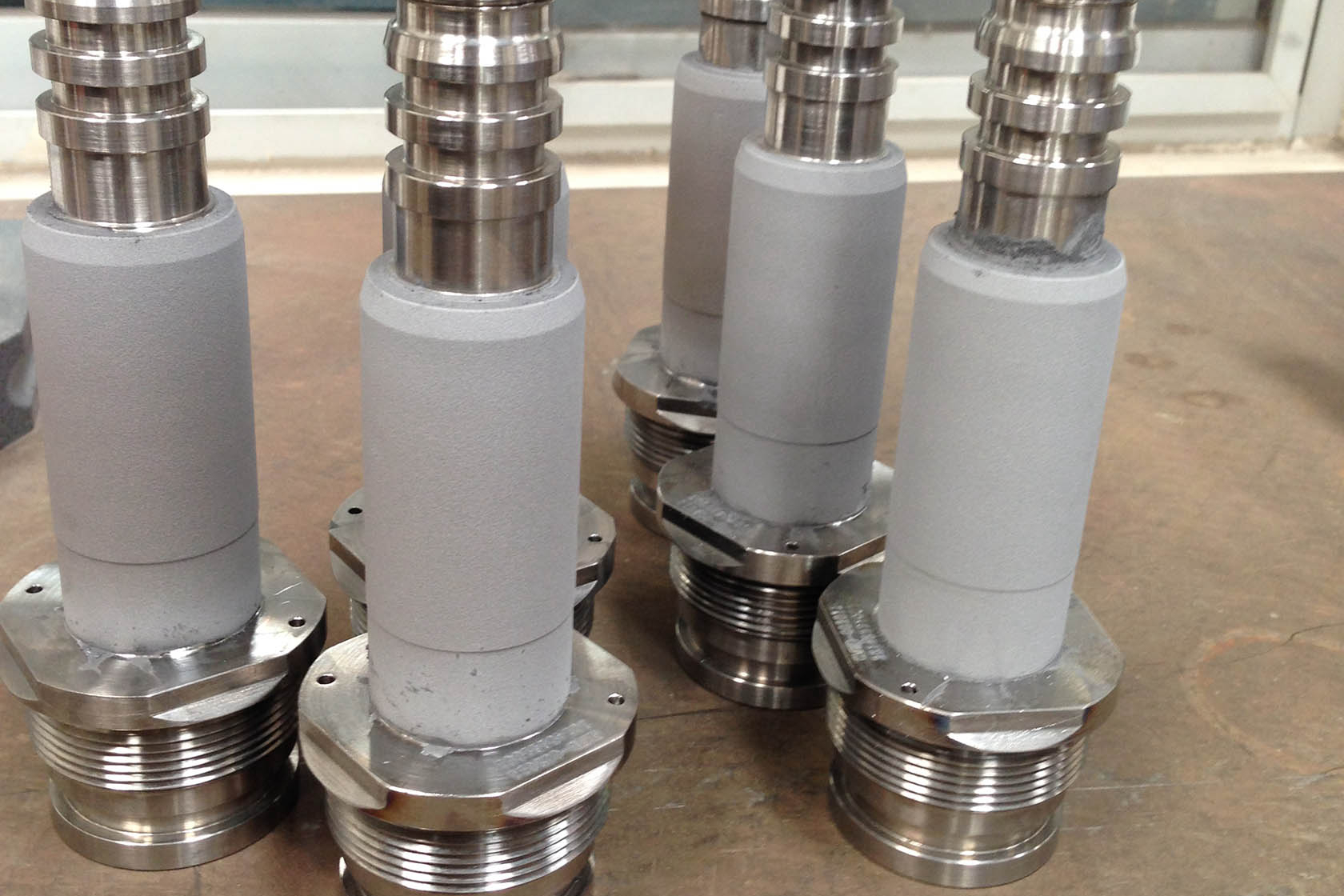Plasma Thermal Barrier Coating for Stop Valves
High-Temperature Protection for Critical Flow Control Components
Stop valves used in gas turbines, thermal reactors, and high-pressure steam systems must endure temperatures above 900°C and severe thermal cycling. Uncoated valve components—particularly those made from superalloys or heat-resistant stainless steels—are prone to oxidation, creep, and thermal fatigue. Plasma-applied thermal barrier coatings (TBC) provide a ceramic surface layer that insulates the metal substrate from extreme heat, reducing surface temperature by up to 150°C and extending valve life in hot gas environments.
Neway AeroTech offers plasma-sprayed TBC solutions tailored for stop valve internals and external housings. Our coatings are engineered for power generation, chemical processing, and oil and gas environments requiring sustained thermal insulation, erosion resistance, and dimensional stability.
Core TBC Technology for Stop Valve Coatings
Thermal barrier coatings on valve parts must provide adhesion, erosion resistance, and thermal insulation while preserving dimensional fit and sealing integrity.
YSZ-based ceramic topcoat for insulation and thermal fatigue resistance
MCrAlY bond coat layer for oxidation protection and TBC anchoring
Plasma spraying under inert atmosphere for porosity control
Coating thicknesses from 80–250 μm depending on application and exposure
All processes follow AMS 2437, ISO 14923, and NADCAP coating guidelines.
Materials Commonly Coated in Stop Valve Assemblies
Substrate Material | Max Temp (°C) | Typical Use | Coating Type |
|---|---|---|---|
980 | Valve plugs, stems | YSZ + MCrAlY | |
1175 | Pressure sleeves | YSZ duplex coating | |
AISI 310 Stainless | 1050 | Valve bodies | YSZ with bond coat |
980 | Throttle sleeves | Nano-porous YSZ |
These substrates benefit from ceramic coatings that reduce surface oxidation and thermal gradients during cyclic operation.
Case Study: YSZ Coated Inconel 625 Valve Plug for Steam Turbine
Project Background
A customer required a plasma-applied YSZ coating on an Inconel 625 valve plug used in a high-pressure steam turbine operating at 920°C. Coating target thickness was 150 μm with Ra ≤ 5 μm surface finish. MCrAlY bond coat was applied first, followed by YSZ top layer.
Typical Coated Valve Components and Applications
Component | Material | TBC Thickness | Industry |
|---|---|---|---|
Valve Plug | Inconel 625 | 150 μm | |
Sleeve Housing | Hastelloy X | 200 μm | |
Throttle Seat | Rene 41 | 180 μm | |
Bonnet Cap | AISI 310 | 120 μm |
Coatings are designed for thermal insulation, sealing surface preservation, and dimensional stability over long service intervals.
Challenges in Thermal Barrier Coating Stop Valve Components
Bond coat adhesion failure during thermal cycling beyond 1000°C
Erosion from steam or flow particles reducing coating life in seat regions
Cracking in TBC top layer from sharp corners or geometry mismatch
Differential expansion causing delamination between ceramic and metallic substrates
Control of Ra 3–5 μm to ensure sealing function post-coating
Plasma TBC Solutions for Stop Valve Assemblies
Low-pressure plasma spray (LPPS) ensures high bond strength and controlled porosity
Precision masking to protect sealing zones and non-coated surfaces
YSZ with 8 wt.% Y₂O₃ composition for phase stability under thermal cycling
HIP + Heat Treatment improves substrate stability before coating
Post-coating inspection for dimensional compliance
Results and Verification
Manufacturing Methods
Substrates were CNC machined from forged or cast Inconel and Hastelloy. Bond coats were plasma-applied followed by ceramic topcoats under controlled temperature and atmosphere.
Precision Finishing
Post-spray surface finish was honed to Ra 4.8 μm. Critical dimensions were re-checked by CMM and hand-lapped where sealing integrity was required.
Post-Processing
Parts received heat treatment after TBC application for bond stabilization. Final passivation was performed to eliminate residual contaminants.
Inspection
X-ray testing validated coating adhesion and layer thickness. SEM confirmed no delamination or cracks. All coatings met customer specs for adhesion (≥30 MPa) and thermal resistance.
FAQs
What ceramic compositions are used for valve TBCs?
How do you ensure adhesion of coatings on curved valve surfaces?
What is the typical coating thickness for turbine stop valves?
Can sealing surfaces be coated or must they be masked?
Are TBCs applicable to stainless steel valve bodies?

